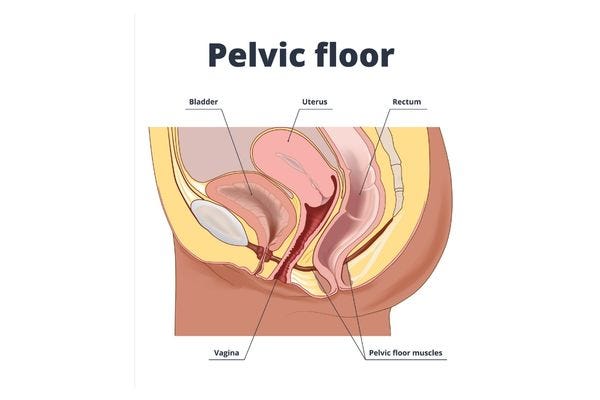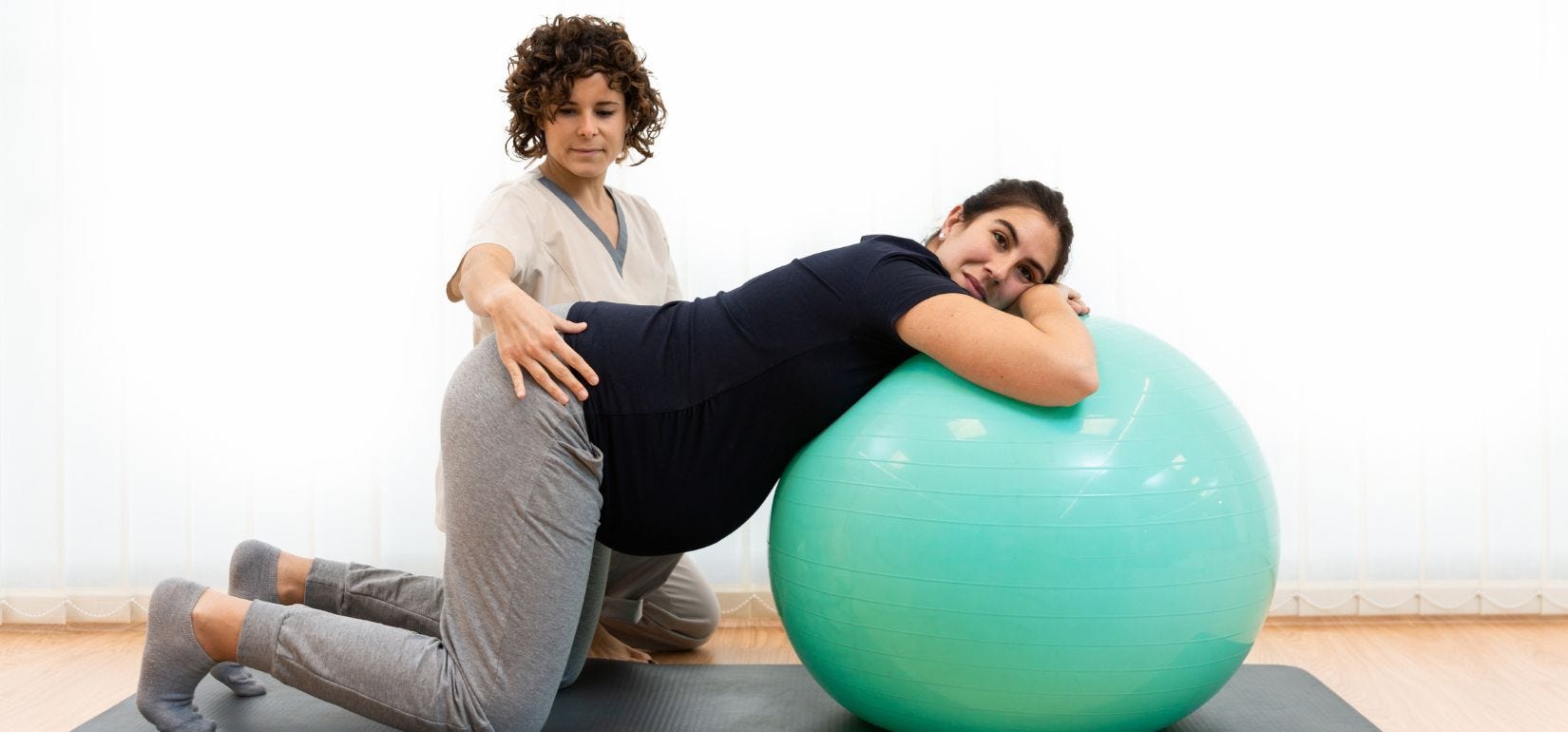This piece has been medically reviewed by Susie Gronski, PT, DPT, Medical Advisor to Aeroflow Urology.
Let’s first answer the question you might be asking yourself right now: What is a pelvic floor massage?
It’s a massage that is a part of pelvic floor physical therapy (PFPT) for both males and females. These massages aid in releasing pelvic pain that occurs for a variety of reasons. Some people choose to see a PFPT to undergo treatment that may include a pelvic floor massage, but you can also practice them in the comfort of your own home.
If you’re experiencing pain in your pelvic floor muscles, use this article to learn how to release the tension.
Understanding PFPT
This therapy treats your pelvic floor’s musculoskeletal system— the bones, cartilage, connective tissues, ligaments, and tendons of the area.
Depending on your specific issues, your pelvic floor therapist may recommend that your treatment plan includes certain pelvic floor exercises or training that help strengthen your pelvic floor, improve symptoms of urinary or fecal incontinence (loss of bladder or bowel control resulting in leaks), or provide pelvic pain relief.
PFPT may include:
Check Your Eligibility
2 Easy Steps
Discover the continence care essentials available through your Medicaid plan.
- Biofeedback: Biofeedback measures muscle electrical activity and it is through intentional muscle training and awareness exercises that improve symptoms of fecal incontinence. Other biofeedback tools are rectal balloon biofeedback where a lubricated tipped inflatable balloon is inserted into the rectum and can be filled with water or air. Pelvic therapists often use this for defecation training, fecal incontinence, sensory training.
- Pelvic floor training: Pelvic floor exercises that strengthen your pelvic floor to improve symptoms of incontinence.
- Functional training: Training and exercise related to activities of daily living, recreational activities, etc.
- Pelvic floor massage (external and internal): A form of massage that uses sensory integration.




Sensory integration is a technique that can help someone map out areas of safe touch and pleasure. The idea is to create more positive experiences with touch, thus lessening pain. Pelvic floor massage can be a massage of the penis, scrotum, vulva, or vagina with hands, pelvic wands, or dilators.
Stigma & PFPT
A pelvic floor massage may sound strange, and there is a stigma that surrounds it, but it can be a helpful tool in easing pelvic pain, among other issues. If the person receiving PFPT is having pain, the goal of the massage is to normalize the response to touch in areas that are painful and sensitive to touch. The idea is for touch to feel good and to lessen the body's protective responses to touch which improves tissue tolerance and function.
If tissues of the pelvis feel restricted, lack mobility when there should be mobility and easy tissue movement, pelvic massage, stretching, and movement would be used to help improve tissue mobility.
Pelvic massage can be both external and internal for both men (rectally) and women (vaginally/rectally). Whether or not internal massage is recommended depends on a person's desired outcomes/goals and clinical exam findings.
Yet, people are still ashamed to discuss the topic and issues surrounding it.
According to a US poll of 500 people 25 years and older, those who had sexual health issues were more reluctant to talk about it with their healthcare providers. 68% said they were afraid and felt that it would embarrass their provider if they did! Our experts also say that males are generally more reluctant to discuss pelvic and sexual health concerns with their partners and medical providers.
And, although it may seem embarrassing to discuss, it’s important to break the stigma around pelvic floor massages, PFPT, and other urinary health issues and treatments.


The more we normalize these kinds of conversations, the less intimidating asking for help with pelvic and sexual health concerns will be!
Why Would Someone Need a Pelvic Floor Massage?
People who seek PFPT may have issues with their pelvic area which can be chronic and painful. The therapy may be used to help with certain types of pelvic floor dysfunction, including:
- Urinary or fecal incontinence.
- Constipation
- Painful urination.
- Pelvic muscle spasms.
- Lower back pain.
- Pelvic pain.
- Pelvic organ prolapse (POP).
A pelvic floor massage may be used specifically to help with:
- Vaginismus (involuntary pelvic floor muscle contraction and muscle guarding with vaginal penetration or insertion).
- Vulvodynia (pain around the vulva).
- Anismus or dyssynergic defecation (when pelvic floor muscles involuntary contract instead of relax with bowel movement)
- Dyspareunia (painful intercourse).
- Painful erection and or ejaculation.
- Anodyspareunia (painful anal intercourse/penetration/stimulation).
- Anorectal pain.
- Bladder pain.
- Tailbone pain.
- Sitting pain.
- Prepartum or postpartum issues.
Guide to Pelvic Floor Massage
Both males and females can use the following guidelines at home to give themselves a pelvic floor massage, but it is recommended to first seek guidance from a licensed pelvic health therapist before starting out to ensure effective treatment outcomes.
The idea of this self-massage is to map out areas that feel good to touch, less good, and not good. Work on gentle, persistent touch to restore tolerance to touch in your genital area. There is normal sensitivity in this area, but the tissues should feel fine with gentle touch instead of pain.
First, first start by learning about pelvic floor muscle and genital anatomy then explore with touch to map out areas that feel good and not so good with touch. You can begin by using pillows or blankets for comfort and support. Then, the first step is to get the area you are massaging used to a gentle touch. When you can touch your genital area without pain, progress to a bit more pressure and movement, but this should still not be painful. Our experts recommend that you do this once a day as part of sensory integration. As you progress, pay attention to when touching the genital area begins to feel better with the end goal of having no pain with touch.
Always reach out to an expert such as a pelvic floor therapist for advice or if pain or pelvic dysfunction become worse.
If you’d prefer to use tools or toys to help with the process, our experts recommend these:
If you experience pelvic floor dysfunction, always speak with your healthcare provider. While it can feel shameful, it’s common and can happen to any person of any age!
Bladder Control Products Covered by Insurance
One reason you may decide to see a pelvic floor therapist is to decrease symptoms of urinary or fecal incontinence. Common symptoms of incontinence include:
- Leaking urine when you cough, sneeze, lift heavy objects, or exercise.
- Feeling a sudden urge to urinate frequently.
- Waking up multiple times in the night to pee.
- Dribbling urine throughout the day.

PFPT is a wonderful way to help improve pelvic floor strength and reverse or prevent incontinence in some cases, but it can be a longer process. If you experience leaks in the meantime, you can use incontinence products to keep you comfortable and dry. The best part is you may qualify to get them 100% covered by your insurance plan with Aeroflow Urology!
We know that living with incontinence can lower your quality of life, which is why we take the stress out of understanding insurance guidelines and complete the paperwork for you.
After filling out our submission form, your coverage will be determined within a few days. You’ll be assigned a dedicated Continence Care Specialist who can answer all of your questions and send you free product samples so you get the perfect products for your unique needs before ordering. Then, we’ll ship your supplies directly to your door in unmarked boxes every month! And with monthly reminders for refilling your order, you’ll never run out of products.
See if you can get free incontinence products with our Eligibility Form that takes under 5 minutes.
Marwick, C. (1999). Survey Says Patients Expect Little Physician Help on Sex. JAMA, 281(23). https://doi.org/10.1001/jama.281.23.2171c
Disclaimer
Information provided on the Aeroflow Urology blog is not intended as a substitute to medical advice or care from a healthcare professional. Aeroflow recommends consulting your healthcare provider if you are experiencing medical issues relating to continence care.










